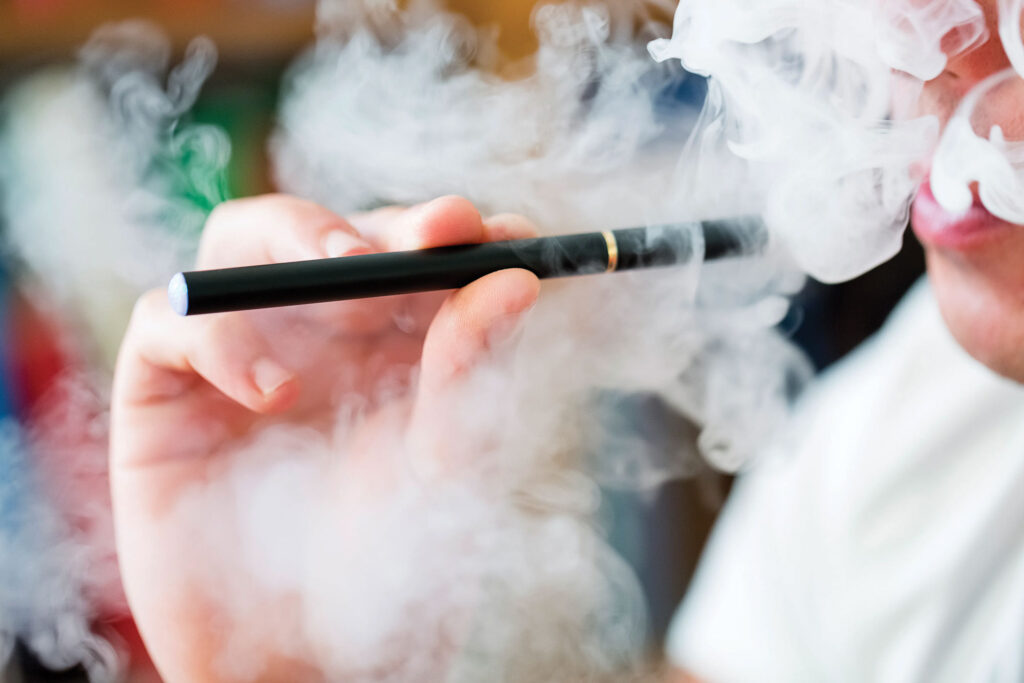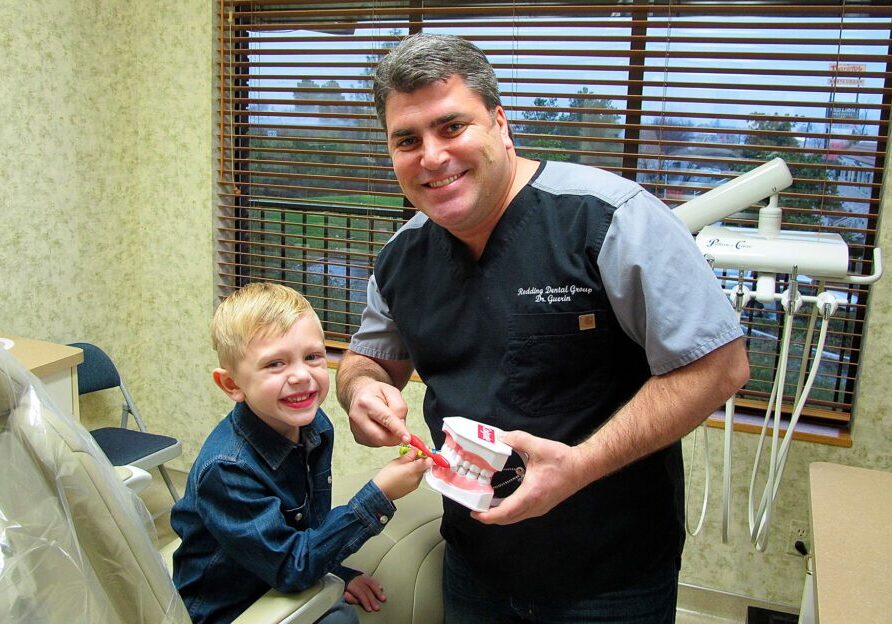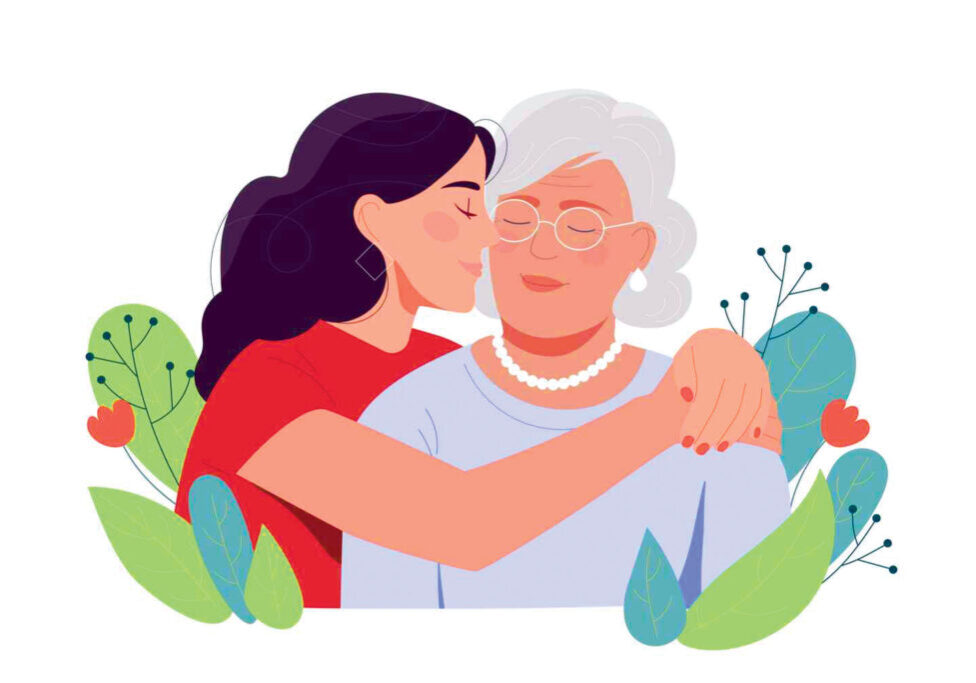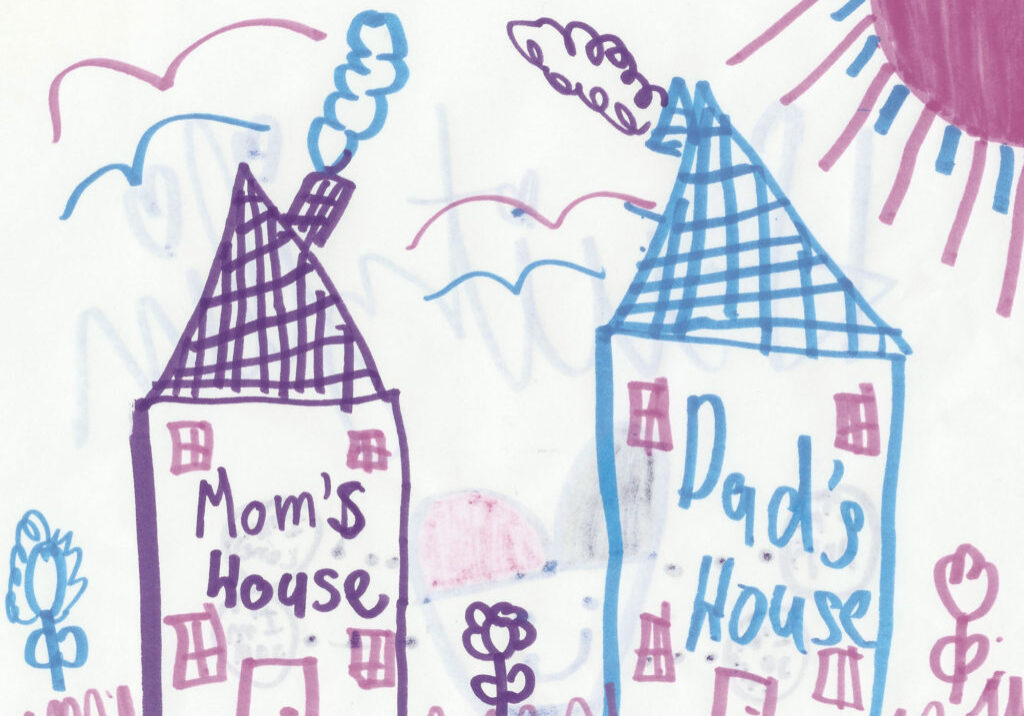In 2015, JUUL Labs, a manufacturer of electronic nicotine delivery devices (more commonly known as a vapes), introduced the first high potency nicotine of its kind called “nic salts.” Nicotine salt can hit your brain nearly as fast as the nicotine from a regular combustible cigarette. This sensation, along with bright marketing, tech inspired devices, attractive models, and fruity flavors, popularized vaping among young people, including our teens.
Today there are hundreds of e-cigarette brands making multitudes of different products, flavored juices and nicotine strengths. You must be 21 years of age to purchase these tobacco products, but unfortunately teens have found ways to continue vaping and teen vaping has become an epidemic.
The FDA’s National Youth Tobacco Survey reported that in 2022, 16.5% of high school students and 4.5% of middle school students currently vape. Almost 85% of students that vape use a flavored product. In 2020 the TRUTH Initiative interviewed 28 American high school teachers who blamed vaping as the cause for student distraction, increased disciplinary issues and decreased academic performance. In 2019, Yale Medicine Published an article with the headline “Nicotine Addiction form Vaping is a Bigger Problem than Teens Realize.” This article went on to quote Yale neuroscientist Marina Picciotto, PhD, who has studied the basic science behind nicotine addiction for decades, to say, “Adolescents don’t think they will get addicted to nicotine, but when they do want to stop, they find it’s very difficult,” A key reason for this, she explains, is “the adolescent brain is more sensitive to rewards.”

Local TUPE program provides opportunity for healthy futures
Most California county coordinated nicotine prevention services for students are provided by the Tobacco Use Prevention Education (TUPE) program. TUPE provides funding from CA propositions 99 and 56, through an application process for tobacco-specific student instruction, reinforcement activities, special events, intervention and cessation programs for students. TUPE program collaborations have made great strides in the fight against teen nicotine use. One recent example of successful collaboration was in November of 2022 when Senate Bill (SB) 793 was passed prohibiting flavored nicotine sales.
Locally, we are active and working on providing opportunity for our students to have healthy futures. For example, Butte County Office of Education (BCOE) TUPE program works in schools directly with students, school staff and caregivers, within the Butte County Nicotine Action Alliance (NAA) and alongside neighboring counties throughout California including Glenn, Sutter, Siskiyou and Tehama to prevent youth nicotine addiction before it starts.
Below are ways you can be aware of risks involved with youth vaping, understand what to look for if your teen is vaping and who to contact for more information:
Vaping – the devices and chemical dangers
Partnership to End Addiction explains that vaping devices are battery-operated devices that people use to inhale an aerosol, which typically contains nicotine, (or sometimes marijuana or zero percent nicotine juice), flavorings and other chemicals.
Vapes contain a number of chemicals, metals and ultrafine particles. These are poisonous when heated to form an aerosol and then inhaled. Because of their chemical ingredients, certain popular flavors — such as cinnamon, vanilla, butter and mint — are especially harmful. Some of the flavoring chemicals are considered safe when eating or drinking. However, once they are heated to produce an aerosol, they form additional harmful compounds that can cause lung damage. There also is evidence that some metals and other components of vapes can seep into the e-liquid and enter the lungs when heated and inhaled, causing mild to severe lung damage.
What to look for if you suspect your teen is vaping
Teens are creative and vapes are already easy to hide. Partnership to End Addiction lists the top clues that parents and teachers can look for if they suspect a teen of vaping:
- Behavioral: Nicotine affects the teenage developing brain and can cause behavior disruptions such as irritability, headaches, learning difficulties, mood swings and anxiety.
- Equipment: You may find devices that look like flash (USB) drives, e-juice bottles, pods/cartridges (that contain e-juice) or product packaging. Aside from leaf marijuana, gel jars that contain highly concentrated marijuana extract (dabs), small tools to scoop dabs and cartridges that contain THC oil (a yellowish-brown substance) are signs of vaping marijuana.
- Online purchases / packages in the mail / store purchases: Be on the lookout for purchases made online and charged to your credit card or unusual packages that arrive in the mail which may contain vaping products. Kids also buy vapes at big box stores, gas stations or from friends.
- Scent: While the smell from vaping is faint, you may catch a whiff of a flavoring. For example, if you smell bubble gum when there’s no gum in their room or chocolate cake when you aren’t baking anything, take note. It might be a flavored nicotine vape. Marijuana vapes can produce a skunk-like smell.
- Decreased caffeine use: Some teens and young adults who vape nicotine develop a sensitivity to caffeine because both nicotine and caffeine are stimulants. The combination of multiple stimulants can make them feel anxious. If your child drank caffeinated energy drinks and has cut back or quit, it may be because of vaping.
- Vaping slang: You may see vaping slang in text messages such as “atty” for an atomizer, “VG” for vegetable glycerin found in e-juice or “sauce” referring to e-juice. Getting “nicked” refers to the euphoria experienced with high doses of nicotine. Feeling “nic sick” refers to heart palpitations, nausea/vomiting or lightheadedness associated with the overuse of nicotine vapes.
- Appearance and behavior changes: Vaping nicotine may lead to anxiety, irritability, difficulty concentrating and loss of appetite. Vaping marijuana can result in bloodshot eyes, dry mouth and thirst, increased appetite and shifts in behavior and mood. Sometimes, there is a noticeable change in friends and a decrease in activities that they once enjoyed.
Help and resources for parents
Start your research at teen.smokefree.gov/ or reach out to your local TUPE program to see what resources you have close to home. You can also try to start a conversation with your teen. This conversation may not happen all in one sitting. It can happen a little bit at a time over a period of weeks, but they will hear you.
Raising a teenager is a challenging job and we know that nicotine use adds to the worries and stress that you may already be experiencing. The good news is most teens don’t vape! Of those that might, awareness and communication can be huge deterrents for young people to pick up the habit in the first place. The teen vaping epidemic can be used as an opportunity to talk with our teens and try to understand them on a new level. We are hopeful that the recent ban on flavored nicotine will bring a dramatic drop in adolescent nicotine use. But until then, don’t be afraid to ask for support. We are all in this together!
Posted in: Health & Nutrition, Youth & Teen
Comment Policy: All viewpoints are welcome, but comments should remain relevant. Personal attacks, profanity, and aggressive behavior are not allowed. No spam, advertising, or promoting of products/services. Please, only use your real name and limit the amount of links submitted in your comment.
You Might Also Like...

Teaching Our Children to Care for the Earth
“We are born with a connection to nature,” says Tim Corcoran in his book The Earth Caretaker Way. “But as we grow, we may lose conscious touch with that […]

Motivating Mouths: Help Create A Strong Relationship Between Your Child and Brushing
“Did you remember to brush your teeth?” I said to my then 7-year-old son. “Yes mom. You can check, even my toothbrush is wet,” he said, smiling with a grin […]

What To Do When Aging Parents Need Help
If your aging parents need help to stay safe and healthy, figuring out their needs, understanding the options, and making decisions can feel overwhelming. Use these seven steps to turn […]

Covered California: What You Need To Know About The New Healthcare Marketplace
According to the California Healthcare Foundation’s 2012 annual report entitled “California’s Uninsured: Treading Water,” in 2011 nearly 7.1 million people under the age of 65 were not covered by health […]



